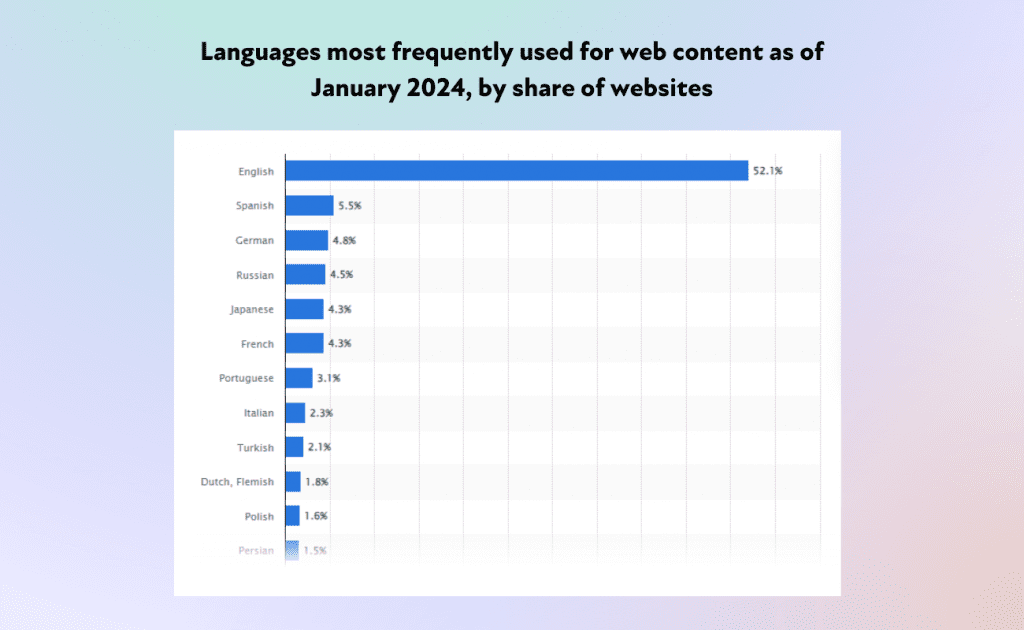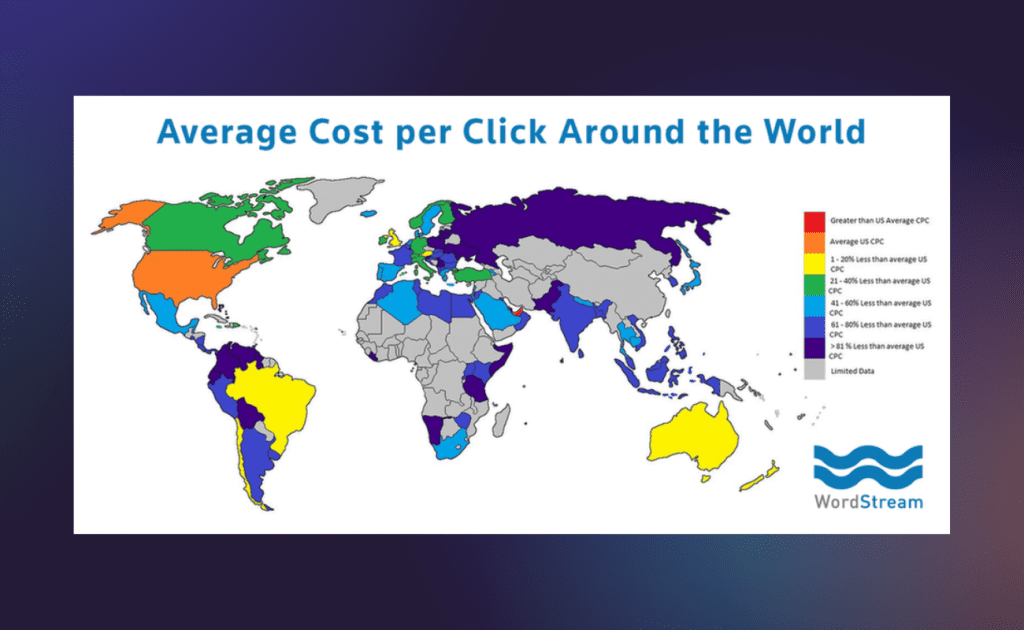Corinne Sharabi
Corinne is the Social Media and Content Lead at BLEND. She is dedicated to keeping global business professionals up to date on all things localization, translation, language and culture.

One of the biggest challenges that affiliate marketers and website owners face is the over-supply of English language content available online. For the most lucrative affiliate markets – business software, financial products, and travel – every available keyword is saturated with superb content from brand-name websites. Consequently, these markets are becoming no-go areas for bootstrapped media companies and smaller publishers.
One way around this problem, which some innovative publishers are taking, is to start building websites in languages other than English. While the balance of supply and demand for content may lean in your favor if you decide to expand your portfolio of websites beyond English-speaking markets, building a website from scratch in a language unfamiliar to your own can present new challenges for experienced marketers.
These challenges lie in every step of the journey of creating a website – from market research to content creation and link building. Let’s go through the key steps in building a website in an unfamiliar language and take a look at how to overcome the problems that may arise when doing this.
The market research stage for building a website in an unfamiliar language is a two-step process. First, you have the higher-level decision of which language and countries you want to target, and then you have the more familiar challenge of finding a profitable niche that you can break into with a newer website.
When thinking about what markets you want to target with your website, and therefore what language you want to build your content in, there are three key factors that you should consider:
If you are trying to market to a new global audience whose culture you are potentially unfamiliar with, then you may be limited to data from keyword research tools to inform you about the demand for certain products and topics. We all know that keyword research tools, even those supplied by Google themselves, are inaccurate.
Although keyword tools are inaccurate in the data that they provide, they are uniform in the way that they measure keyword volume across languages and regions. This means that you can judge a new market’s keyword volume by comparing the figures in your target countries to those in the countries that you are more familiar with. If you know that there is sufficient demand in a familiar country, and search volume in your new target country is similar (or at least similar when you take into account the population of internet users of the different countries), then you are likely to have sufficient demand for your market niche.
The process of gauging content competition is universal across languages. For each new keyword that you want to target, no matter what language, you have to look at the authoritativeness of pages listed on the first page of Google. If three or more of the top ten ranking pages are from low authority websites, then you have a chance of competing for that keyword with a relatively new website.
In an ideal world, you also want to be checking the quality and relevance of content ranking for new market keywords, with lower quality competition making success more likely. However, if your linguistic understanding of your new target language is not strong enough to do this, then a marketing translation assessment based purely on the authoritativeness of competitor websites can suffice.
For a lot of new global market terms, the size of the competition will be lower for languages other than English. According to Statista 2024 research, this should broadly correlate with the volume of content published in each additional market’s language (shown below):

We can cash out these differences with an international SEO example comparing the competition for a typical competitive keyword in English and French. The keywords being compared here are “best accounting software” and “meilleur logiciel de comptabilité.”


The relevant data point here is DR (standing for Domain Rating). As we can see, the French language results are populated with much lower DR sites than the English results. Where the English results have an average DR of 81, the French results only have an average domain of 41.
This means that a skilled marketer could potentially rank an independently run site for the French keyword. To rank for the keyword in English you would need to become a go-to resource in the business software space. There are countless opportunities like this in languages other than English.
The best way of assessing the spending power of a new global market you are targeting is by looking at the relative CPC, cost per click, for your chosen keyword. The CPC’s of traffic from various countries tends to correlate with their spending power and proclivity to make purchases online. You can see a map, as provided by leading PPC tool Wordstream, of countries with their average CPC below:

Comparing CPC across countries not only gives you insight into the overall spending power of their digital population but can also provide hints on the differences between commercial intent between keywords.
The first marketing step necessary to create a global web presence in new and unfamiliar languages, that does require knowledge of your target market language, is keyword research. Simply translating the most profitable keywords from your native language to your target language can see you leave important keywords on the table.
The biggest weakness of translating keywords directly from one language to another is that it fails to take into account the way that keywords work together in clusters. Multilingual content writing for SEO purposes involves using semantically relevant keywords together on a single page of copy. While it may be possible to directly translate keywords on a one-by-one basis, incorporating semantically related keywords adds far more variables where nuances between languages can cause translation errors.
Keyword research in new languages should therefore involve two steps. The first step involves choosing top-level keywords and topics to write about. This can be done with keyword and competition analysis alone.
High-performing keywords in your native language can be translated into your target language, and you can work out any necessary tweaks to keywords by looking at search volume and CPC data.
When working out when and where to use semantically related keywords, however, you will likely need the help of an international SEO expert regarding which -keywords best fit with the various topics that you intend to write about. Missing the nuances between ostensibly similar long-tail keywords can both lower the precision of your keyword strategy and reduce the readability of your content.
One way that you can make up for a lack of holistic knowledge about your target language is by putting extra emphasis on using insights from your analytics and search console data once your website has started gaining traffic. Search console data shows you exactly what your visitors are searching to find your site.
The language that people use to search online does not always directly match the formal written language. You can only truly understand the types of phrasing that your audience uses in search when that data is collected.

For most of us, the most intimidating part of starting a website in new global languages is the idea of having multilingual content created that we cannot read. If we cannot read articles at the point of publishing, then how can we take responsibility for quality control?
The first important point to make about creating content is that simply translating content from one language to another will not suffice in creating a quality article. Any digital market that is worth getting into will have a good number of articles for almost every target market keyword, written by native writers. While the saturation of content, and therefore the standard of content required to rank, may vary between market and language, the clumsiness of directly translated articles will put you at a disadvantage in almost every market.
If the detail-richness between SERP competitors is similar, then readability becomes the deciding factor between good and great content, making multilingual content writing a vital part of the content creation puzzle. You also may wish to consider utilizing an editor who is native in your target market’s language to add an extra layer of quality control.
As there is less competition in a lot of non-English speaking SERPs, you will usually have to do less link building for your website to succeed. If you are going down the route of getting links through outreach, you should bear in mind that the number of available targets in new international markets will be in line with the overall volume of content published in that language.
For less commonly used languages, you may only have a small number of targets, meaning that scaling link-building using a “shotgun” style approach may not work. Smaller segments of targets and additional personalization may be needed to succeed with outreach.
Outreach in any language works best when messages are written in a conversational manner. Ideally, you want to be matching the tone of the target site with your messages. This can be challenging if you are not working in your native language, and having someone who is comfortable using slang and conversational language with targets should form part of your link-building team.
The biggest risk that a smaller media business owner takes when they move into new global markets is that they lose the ability to be a final layer of quality control over a lot of what they do. This is why it is not recommended for inexperienced marketers or people who want to do things on as small a budget as possible.
However, with the right infrastructure and localization team, you can benefit from operating in less competitive markets, enjoy a faster return on investment, and most importantly, tap into new revenue sources, than when competing in English-speaking markets only.
Looking for an experienced localization partner? Here at BLEND, we make it easy to grow globally with a full slate of localization services, including professional translation and multilingual voice-overs in 120+ languages, transcription, subtitling, interpreting, data enrichment, and more. Combining the power of AI with industry-leading tools and human insight, it couldn’t be simpler to localize all of your assets.
Ready to learn more about how BLEND can help you with your market expansion plans? Get in touch today.
What our customers are saying